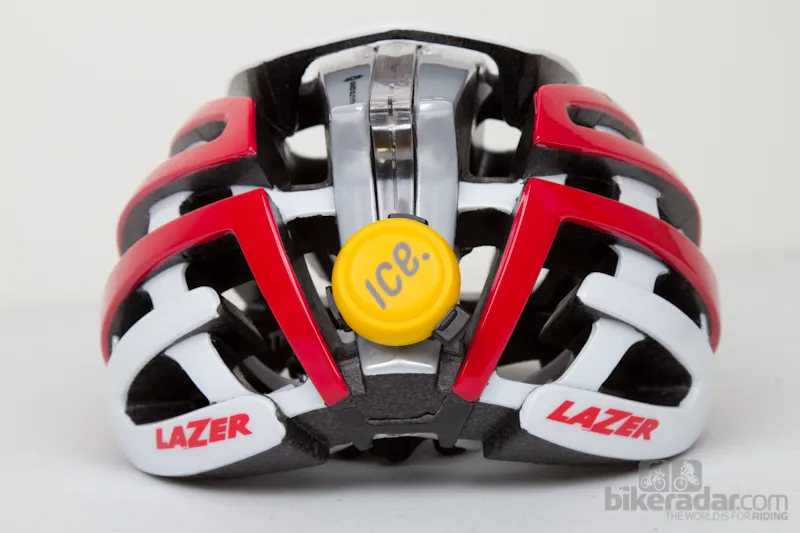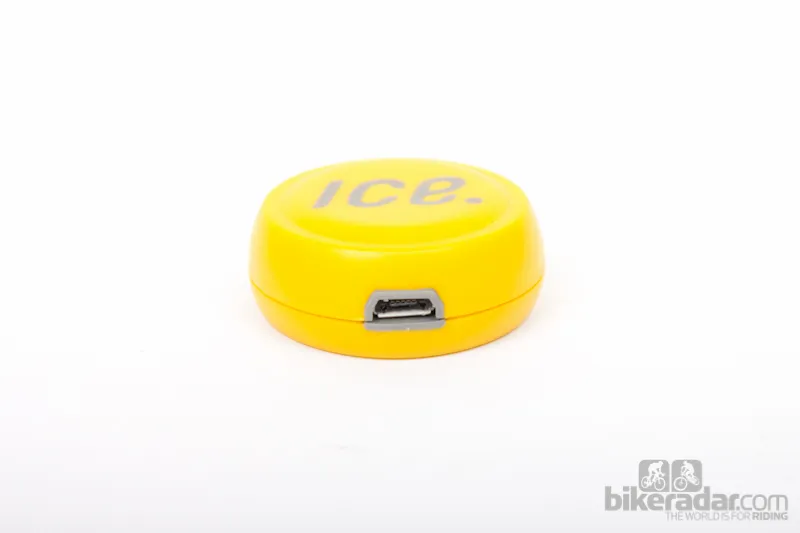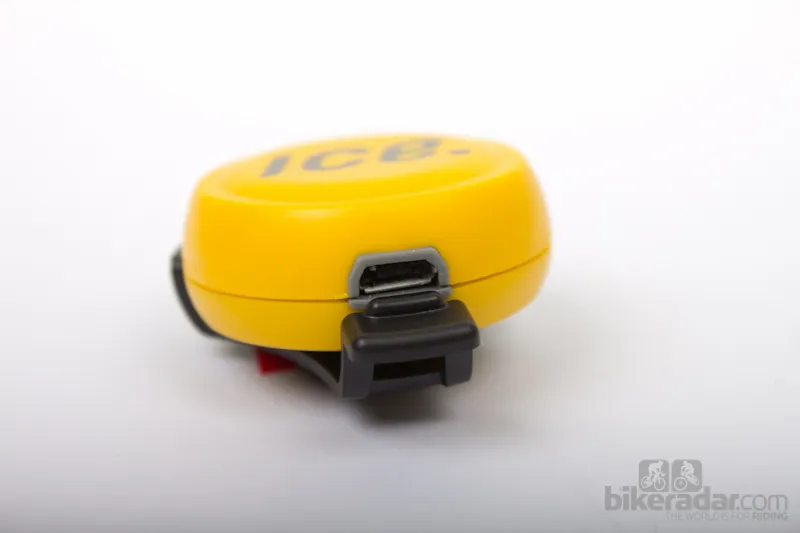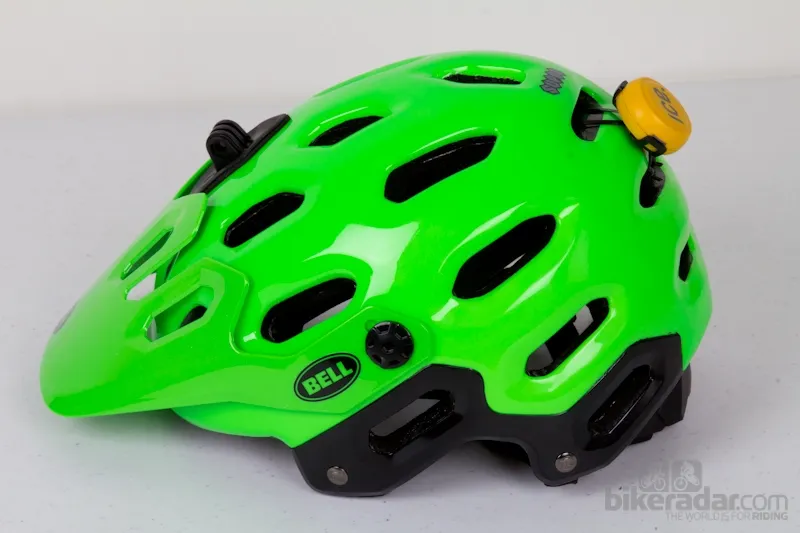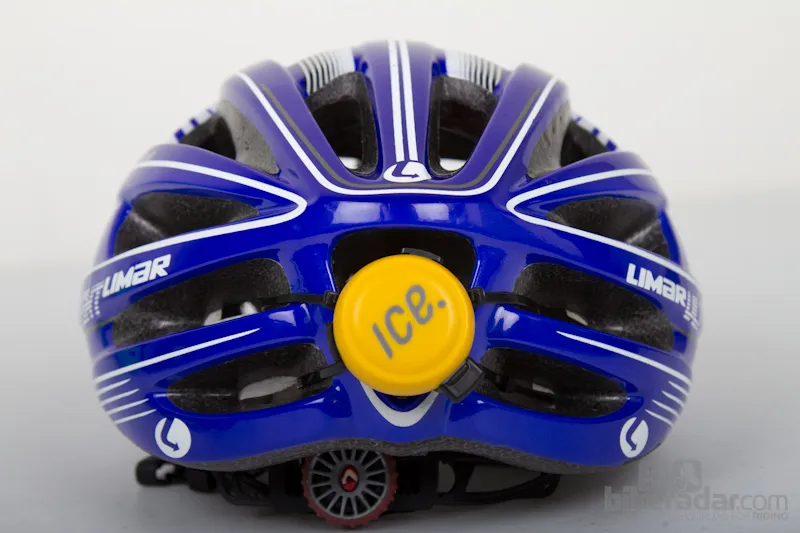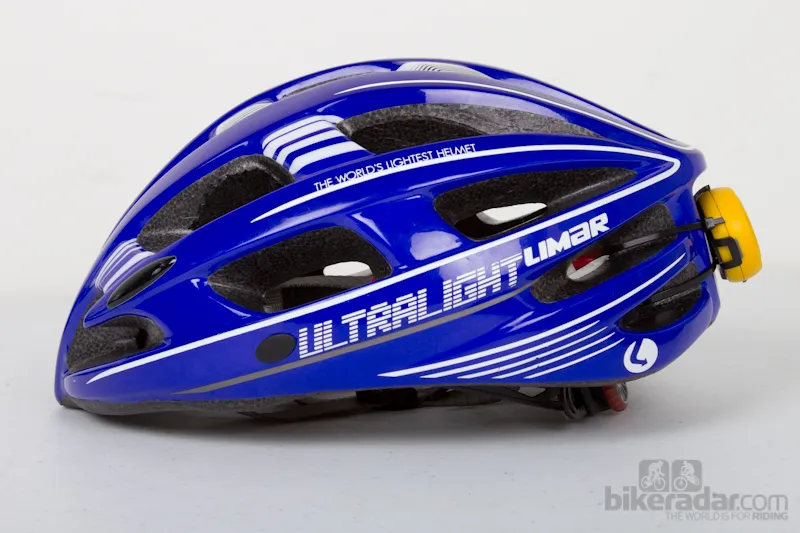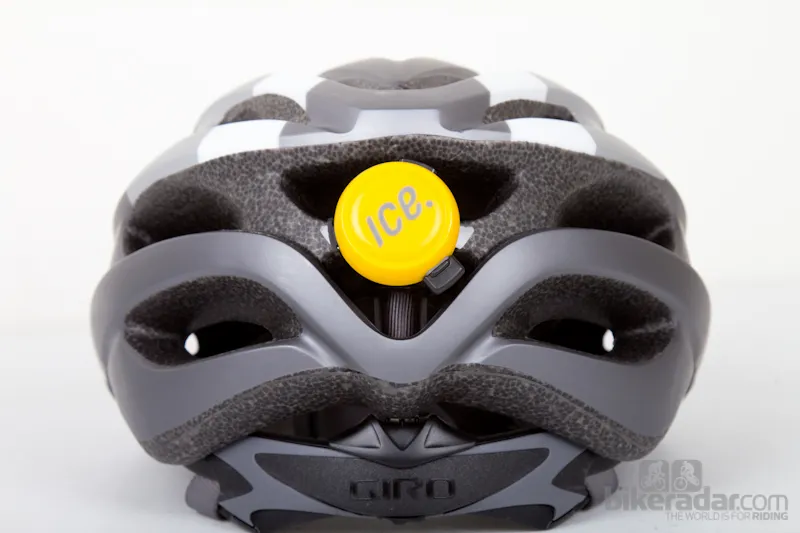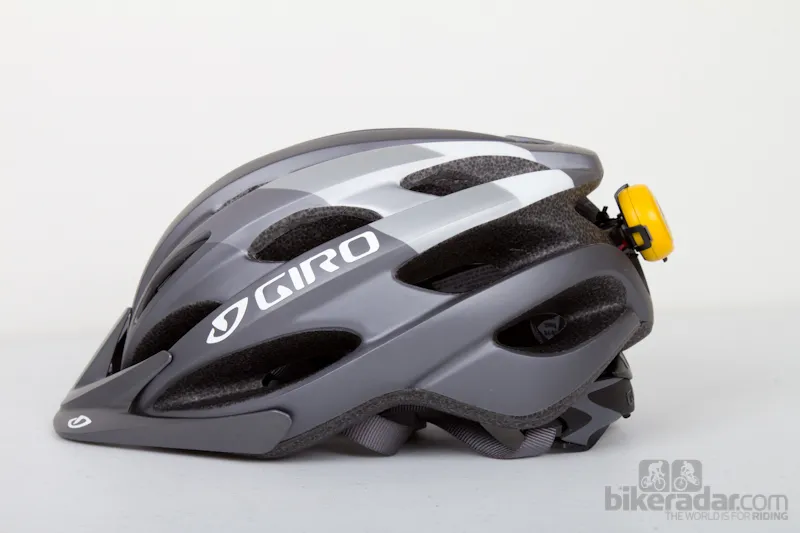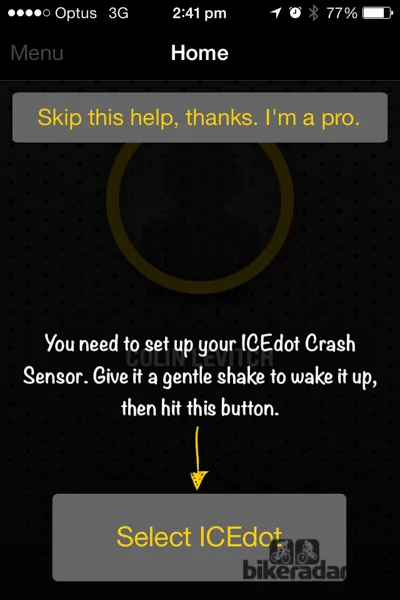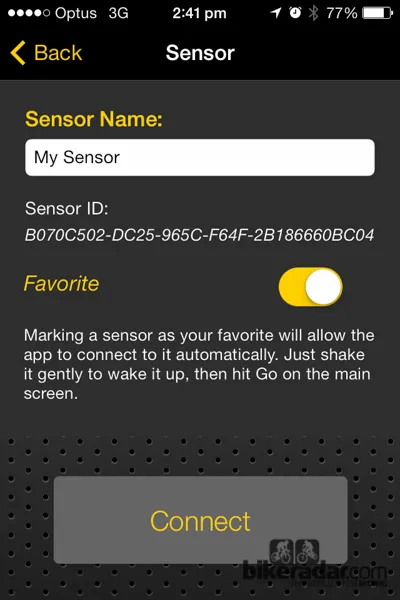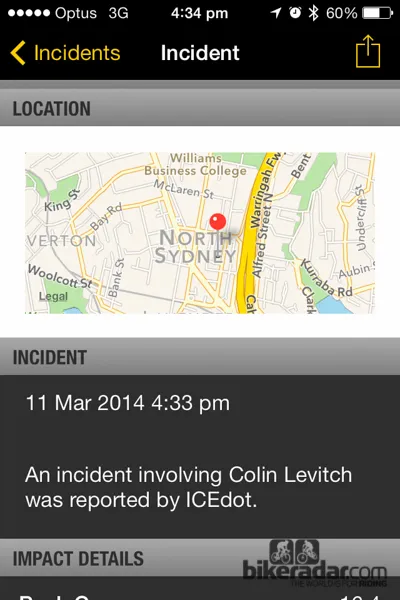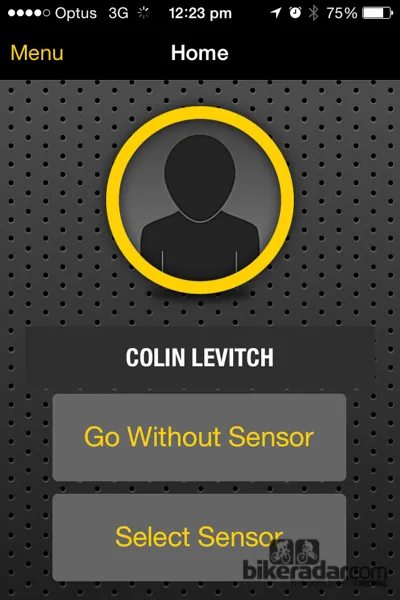Cyclists are often exposed to external danger, especially when out solo: in just a split second a patch of gravel, or inattentive driver can put us in a bad situation. The ICEdot was created for this kind of situation, acting as a guardian angel of sorts. We originally took a look at ICEdot in 2012, and the product has quickly grown in popularity since.
ICEdot is a small yellow pod that combines an accelerometer, gyroscope and low energy bluetooth (Bluetooth 4.0) with an iPhone 4S (or newer) or Android 4.3 and above to detect an impact and notify loved ones when you can’t.
The sensor itself weighs only 15g, and attaches to the back of your helmet with a small plastic mount and a few zip-ties (20g fully installed). Powered by a rechargeable lithium-polymer battery, the ICEdot will run for roughly 20 hours and hold a charge in standby mode for nearly a month.
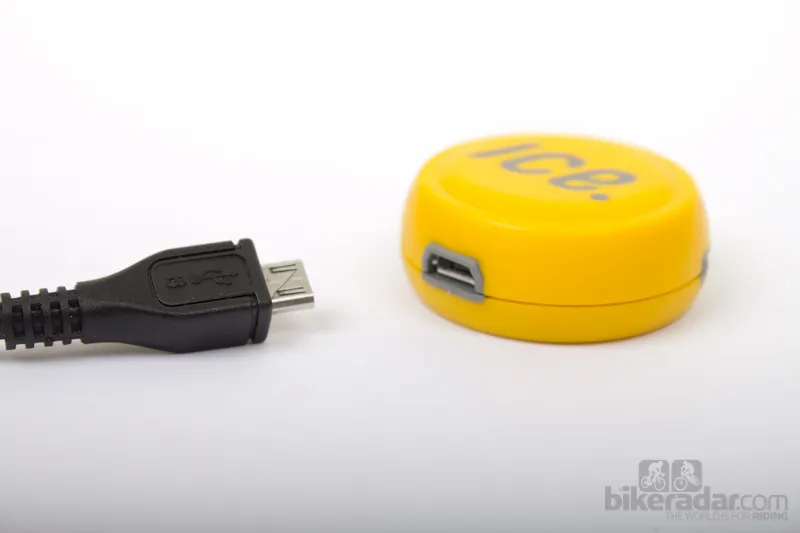
ICEdot uses a micro-USB port for charging, which also doubles as an anchor point for the mount
The USB charge port doubles as an anchor point for the mount, which helps to keep water and grime out of the plug. Although the device is not watertight, ‘HzO nanocoating’ is used to waterproof the electronics from the inside out. This is the same coating as in the next generation of water resistant smartphones.
Before using the sensor, you must set up an account online and register the given PIN number. A one-year subscription to the ICEdot service is included with the sensor – but subsequent years will have a subscription cost of US $10/AU $10/UK £5, a crucial part that enables it all to work.
Your online account holds basic contact information, including insurance provider, and any relevant medical history or allergies. Emergency contacts are nominated and you select whether they will receive a text message, email or phone call if an incident is detected.
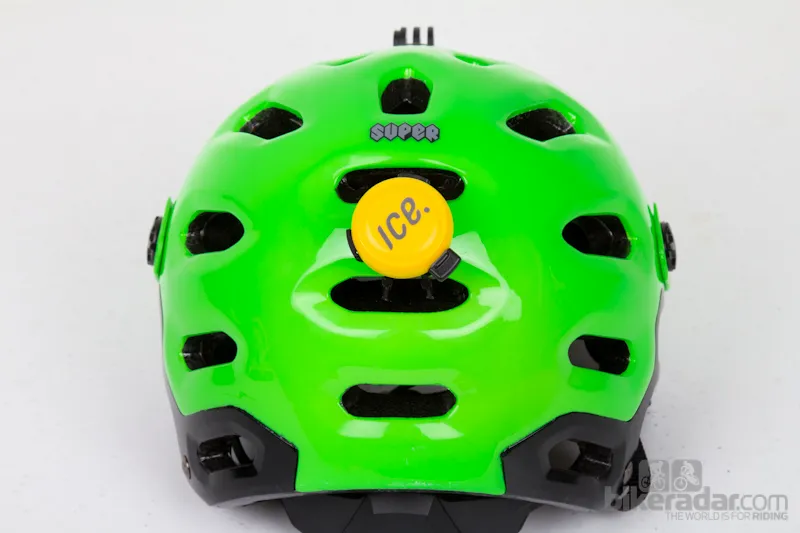
The sensor can be mounted to just about any helmet
We tested the sensor’s fit on numerous helmets. As we found, it’s very important to keep the head of the zip-ties outside the vents to stop them from poking the back of your head. On a few less ventilated helmets, longer zip ties were required to securely fasten the sensor; but another option is to use the included industrial double-sided tape to attach it.
With the sensor paired to the phone app, it’s ready to go. When an impact is detected, the sensor uses a proprietary algorithm to determine whether the hit exceeds brain-trauma threshold. By using both an accelerometer and a gyroscope the ICEdot can detect movement as well as twisting (whiplash).
If the sensor determines the forces are dangerous, it alerts the connected smartphone and triggers an emergency countdown. Even when our phones were on silent an alarm sounded, albeit a quieter one.
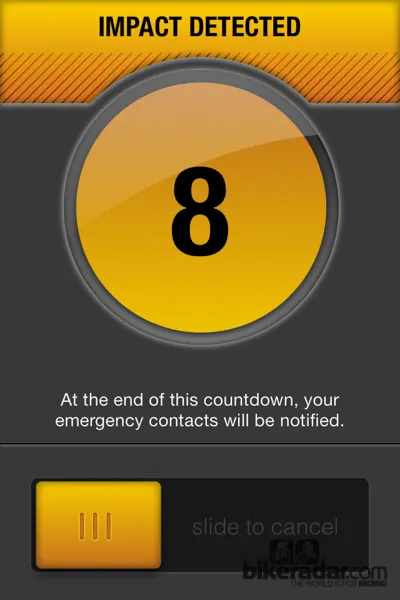
If the sensor detects an impact, the emergency countdown begins
If the timer counts down to zero through the preset time interval – between one second and two minutes – a message is sent out with the location of the incident to up-to ten emergency contacts. In the case of an accidental trigger, such as dropping your helmet, simply turn off the alarm before it reaches zero and loved ones will be none the wiser.
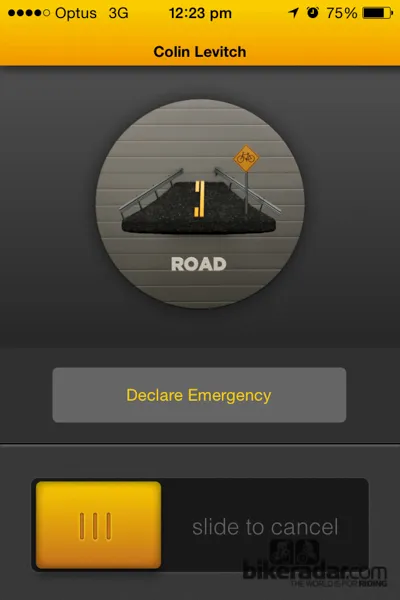
A recent app update allows for users to manually trigger an emergency message to be sent out
Another addition to the app is the ‘Track Location’ feature. Usually the ICEdot app only finds your location when an incident has occurred; however, the app can now track your whole ride and post it live to your ICEdot profile - which makes us wonder if some sort of Strava integration is in the works. The addition of live tracking also means that your wife can see those extra laps of the national park you did after you said you were on your way home.
While we believe the ICEdot is a great addition for any cyclist, there is still a little room for improvement. Why not make the whole unit reflective, or even integrate a light? After all, it’s located in the perfect place and already includes a battery.

Cellular data is required for the emergency message to be sent
Because the ICEdot app is dependant on cellular data, if service is unavailable – or is turned off on your phone – an accident would go unreported. The sensor is dependent on both its internal battery and a mobile phone. When connected to a smartphone the Bluetooth connection has a minimal impact on battery life, but the using live GPS tracking drains the battery – much as the Strava mobile app does.
Another limitation to the ICEdot is that a small portion of the population are still using phones that aren’t so smart. Our tester's first emergency contact is still using such a phone and although they still received an emergency message, the link to Google Maps was useless.
At AU$178/US$148.95/£139.00 the sticker price may come as a shock, yet most will agree that this is a small cost to pay for the peace of mind.
